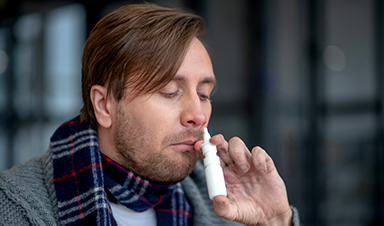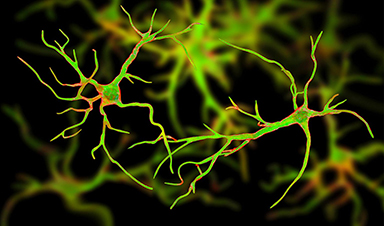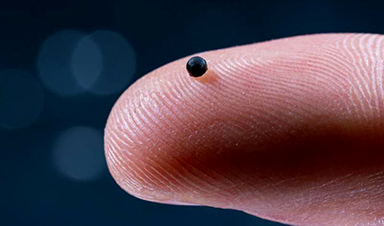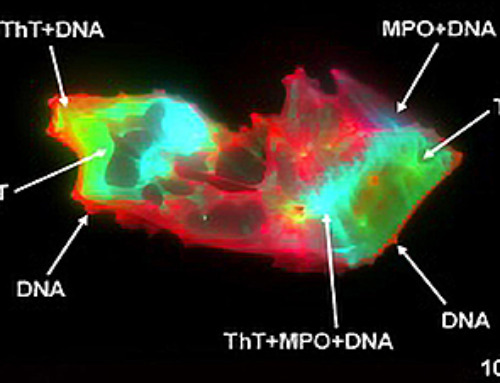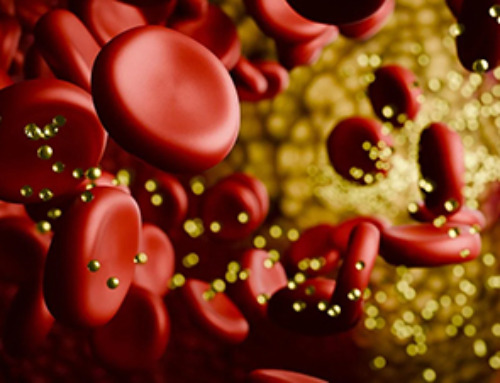In a recent study published in npj Vaccines, a group of researchers demonstrated that a single-dose intranasal application of a modified Severe acute respiratory syndrome coronavirus 2 (SARS-CoV-2) strain ∆3678 effectively induces robust immune responses, protecting mice against various forms of the virus, suggesting its potential as an efficient mucosal vaccine.
Background
Over three years, SARS-CoV-2, the instigator of the coronavirus disease 2019 (COVID-19) pandemic, has claimed over 6.9 million lives globally. Despite the expedited creation of four Food and Drug Administration (FDA)-authorized vaccines, their efficacy is threatened by emerging, more transmissible variants known for immune evasion.
The current vaccines, delivered via injection, can potentially provoke insufficient respiratory tract immune reactions, especially against these variants. Intranasal immunization can stimulate robust local and systemic immunity, offering enhanced protection.
Further research is essential due to the ongoing global health threat posed by SARS-CoV-2 variants and the limited respiratory tract immune responses induced by current parenterally administered vaccines, underscoring the need for an optimized intranasal vaccine that effectively bolsters both mucosal and systemic immunity.
About the study
The researchers cultivated Vero-E6 cells from African green monkeys and Vero-E6-TMPRSS2 cells, maintaining them at 37°C with 5% CO2.
They used infectious clones of SARS-CoV-2, ∆3678, and the BA.5 variant. For animal studies, female K18-hACE2 C57BL/6J mice, aged 8-10 weeks, were infected intranasally (i.n.) with either the WT WA1 or ∆3678 viruses or mock-infected.
On day 28 post-initial infection, they were challenged with the WT WA1 or BA.5 virus. The researchers monitored the mice for weight changes and health status, euthanizing those losing over 20% of their body weight.
The University of Texas Medical Branch’s Institutional Animal Care and Use Committee sanctioned all experiments in an Animal Biosafety Level 3 (ABSL3) environment. Researchers processed lung lobes for plaque assays and utilized centrifugation for clarification.
They employed the Enzyme-Linked Immunosorbent Assay (ELISA) with SARS-CoV-2 Receptor-Binding Domain (RBD) protein for antibody detection. B cell Enzyme-Linked ImmunoSPOT (ELISPOT) assays adhered to known protocols. Lung leukocytes or splenocytes were also exposed to SARS-CoV-2 peptides for intracellular cytokine staining using specific antibodies.
Lung tissues were subjected to RNA extraction and analyzed using the nCounter Pro System, with results visualized in R 4.1.2. Statistical evaluations of viral loads, cytokines, antibodies, and cell responses were performed using Prism software, employing non-paired Student’s t-tests for p-values.
Study results
In the present study, researchers employed K18-hACE2 mice to explore the potential of the ∆3678 virus as a vaccine against SARS-CoV-2, inspired by previous research. The mice received intranasal immunization with this attenuated strain, with groups administered wild-type SARS-CoV-2 USA-WA1/2020 or a placebo serving as controls.
Remarkably, all mice immunized with the ∆3678 virus thrived without signs of weight loss or ill health 28 days after vaccination, contrasting with some fatalities and weight loss in mice exposed to the wild-type virus.
When the researchers analyzed immune responses, they discovered both the ∆3678 and wild-type virus evoked a Th1-skewed response in the lungs. The ∆3678 group exhibited notable T cell activation, especially in the heightened presence and activity of CD4+ and CD8+ T cells producing Interferon Gamma (IFNγ).
Although both groups showed robust Immunoglobulin A (IgA)+ B cell responses, the ∆3678 groups were slightly diminished. Interestingly, both groups exhibited comparable SARS-CoV-2-specific IgA or IgG antibodies, with similar patterns observed in the spleen, indicating a systemic Th1-prone response.
The team then assessed the vaccine’s protective efficacy, exposing the immunized mice to a high dose of wild-type SARS-CoV-2, and observed that mice previously inoculated with either the ∆3678 or wild-type virus exhibited neither traces of the virus in their lungs or trachea nor weight loss following the challenge, contrasting with the control group.
Notably, even when challenged with the Omicron BA.5 variant, the ∆3678 group demonstrated no detectable viral presence, highlighting the vaccine’s broad protective potential.
Further analyses post-challenge revealed an enhanced immune response in ∆3678-immunized mice, particularly in the increased numbers of activated T cells in the lungs and spleen. Additionally, both vaccinated groups exhibited strong antibody responses.
Researchers analyzed lung tissue gene expression to decipher the immunity mechanisms, uncovering diminished inflammatory signaling in vaccinated groups and identifying genes linked to long-lasting lung-resident memory T-cell responses.
These findings collectively suggest the ∆3678 strain, though highly attenuated, effectively stimulates comprehensive immune responses in mice, even those previously exposed to SARS-CoV-2. The vaccine appears to confer solid protection against diverse SARS-CoV-2 strains, including the Omicron variant.
The promise shown by intranasal administration of this live-attenuated vaccine candidate in mice warrants further exploration, especially considering the potential for enhanced and sustained mucosal immunity.
However, its efficacy in humans requires further investigation. The profound insights gained from this study underline the ∆3678 virus as a compelling candidate for future SARS-CoV-2 vaccines, potentially impacting both human and veterinary medicine.
- Adam, A., Kalveram, B., Chen, J.YC. et al. (2023) A single-dose of intranasal vaccination with a live-attenuated SARS-CoV-2 vaccine candidate promotes protective mucosal and systemic immunity. npj Vaccines., doi: https://doi.org/10.1038/s41541-023-00753-4. https://www.nature.com/articles/s41541-023-00753-4
News
Scientists Uncover Hidden Blood Pattern in Long COVID
Researchers found persistent microclot and NET structures in Long COVID blood that may explain long-lasting symptoms. Researchers examining Long COVID have identified a structural connection between circulating microclots and neutrophil extracellular traps (NETs). The [...]
This Cellular Trick Helps Cancer Spread, but Could Also Stop It
Groups of normal cbiells can sense far into their surroundings, helping explain cancer cell migration. Understanding this ability could lead to new ways to limit tumor spread. The tale of the princess and the [...]
New mRNA therapy targets drug-resistant pneumonia
Bacteria that multiply on surfaces are a major headache in health care when they gain a foothold on, for example, implants or in catheters. Researchers at Chalmers University of Technology in Sweden have found [...]
Current Heart Health Guidelines Are Failing To Catch a Deadly Genetic Killer
New research reveals that standard screening misses most people with a common inherited cholesterol disorder. A Mayo Clinic study reports that current genetic screening guidelines overlook most people who have familial hypercholesterolemia, an inherited disorder that [...]
Scientists Identify the Evolutionary “Purpose” of Consciousness
Summary: Researchers at Ruhr University Bochum explore why consciousness evolved and why different species developed it in distinct ways. By comparing humans with birds, they show that complex awareness may arise through different neural architectures yet [...]
Novel mRNA therapy curbs antibiotic-resistant infections in preclinical lung models
Researchers at the Icahn School of Medicine at Mount Sinai and collaborators have reported early success with a novel mRNA-based therapy designed to combat antibiotic-resistant bacteria. The findings, published in Nature Biotechnology, show that in [...]
New skin-permeable polymer delivers insulin without needles
A breakthrough zwitterionic polymer slips through the skin’s toughest barriers, carrying insulin deep into tissue and normalizing blood sugar, offering patients a painless alternative to daily injections. A recent study published in the journal Nature examines [...]
Multifunctional Nanogels: A Breakthrough in Antibacterial Strategies
Antibiotic resistance is a growing concern - from human health to crop survival. A new study successfully uses nanogels to target and almost entirely inhibit the bacteria P. Aeruginosa. Recently published in Angewandte Chemie, the study [...]
Nanoflowers rejuvenate old and damaged human cells by replacing their mitochondria
Biomedical researchers at Texas A&M University may have discovered a way to stop or even reverse the decline of cellular energy production—a finding that could have revolutionary effects across medicine. Dr. Akhilesh K. Gaharwar [...]
The Stunning New Push to Protect the Invisible 99% of Life
Scientists worldwide have joined forces to build the first-ever roadmap for conserving Earth’s vast invisible majority—microbes. Their new IUCN Specialist Group reframes conservation by elevating microbial life to the same urgency as plants and [...]
Scientists Find a Way to Help the Brain Clear Alzheimer’s Plaques Naturally
Scientists have discovered that the brain may have a built-in way to fight Alzheimer’s. By activating a protein called Sox9, researchers were able to switch on star-shaped brain cells known as astrocytes and turn them into [...]
Vision can be rebooted in adults with amblyopia, study suggests
Temporarily anesthetizing the retina briefly reverts the activity of the visual system to that observed in early development and enables growth of responses to the amblyopic eye, new research shows. In the common vision [...]
Ultrasound-activated Nanoparticles Kill Liver Cancer and Activate Immune System
A new ultrasound-guided nanotherapy wipes out liver tumors while training the immune system to keep them from coming back. The study, published in Nano Today, introduces a biodegradable nanoparticle system that combines sonodynamic therapy and cell [...]
Magnetic nanoparticles that successfully navigate complex blood vessels may be ready for clinical trials
Every year, 12 million people worldwide suffer a stroke; many die or are permanently impaired. Currently, drugs are administered to dissolve the thrombus that blocks the blood vessel. These drugs spread throughout the entire [...]
Reviving Exhausted T Cells Sparks Powerful Cancer Tumor Elimination
Scientists have discovered how tumors secretly drain the energy from T cells—the immune system’s main cancer fighters—and how blocking that process can bring them back to life. The team found that cancer cells use [...]
Very low LDL-cholesterol correlates to fewer heart problems after stroke
Brigham and Women's Hospital's TIMI Study Group reports that in patients with prior ischemic stroke, very low achieved LDL-cholesterol correlated with fewer major adverse cardiovascular events and fewer recurrent strokes, without an apparent increase [...]
